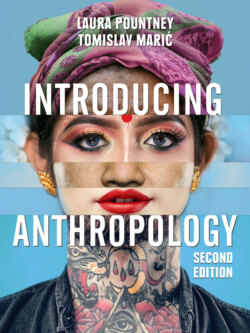Читать книгу Introducing Anthropology - Laura Pountney - Страница 116
Cosmetic surgery in Brazil (Alexander Edmonds)
ОглавлениеAlexander Edmonds’s book Pretty Modern (2010) is an interesting account of Brazil’s emergence as a global leader in plastic surgery. Edmonds conducted research that took him from Ipanema socialite circles to glitzy telenovela studios to the packed waiting rooms of public hospitals offering free cosmetic surgery. He situates plastic surgery within the medical, economic and psychological landscape of consumer capitalism in modern Brazil, unveiling a specific and intriguing sociomedical discourse of the right to beauty. In the following text, he speaks about his ethnography and its findings.
In this book I tell the story of the growth of cosmetic surgery in a developing country with extremes of wealth and poverty. I begin with the event that first attracted my attention to the topic as a graduate student living in Rio de Janeiro: a Carnival samba school paying homage to a plastic surgeon, Ivo Pitanguy. He was a fabulously rich man with a clientele of international celebrities, so why was he being feted in a parade seen as the most vibrant expression of Afro-Brazilian culture? True, Pitanguy did reconstructive surgery on the poor, including hundreds of victims of a horrific circus fire; and he has also made cosmetic procedures more widely accessible. He himself declared: ‘Plastic surgery is not only for the rich. The poor have the right to be beautiful.’
A waiting room in Ivo Pitanguy’s plastic surgery clinic in Rio de Janeiro. (© Alexander Edmonds)
Pitanguy helped realize that vision. He and his team have performed tens of thousands of surgeries in a charity ward, while some public hospitals offer free cosmetic operations and private clinics market financing plans. Brazil became the world’s second largest market for cosmetic surgery. Yet its numerous favelas have become icons of savage capitalism, while the nation struggles with many public health problems. How in these conditions did it become ‘champion’, as the media boasted, of plastic surgery – or plástica, as it’s known in Brazil?
I set out to do ethnographic fieldwork to try to answer this question. I started in the numerous plastic surgery clinics in Rio de Janeiro. I also did research at some of the sites where aesthetic ideals are produced and consumed, such as advertising agencies. I met a wide range of people: divorced housewives, maids and their elite mistresses, favela residents aspiring to be fashion models, trans people, telenovela actresses and doctors training to be plastic surgeons. This was an amazing experience for me that I felt taught me about Brazil and anthropology – and also sometimes a difficult one, as participants related the pain of surgeries gone wrong or difficult events in their lives.
The ethnography argues that Brazil’s healthcare system, racial and gender norms, and its culture of the body have fed the growth of this medical practice. For example, a stratified healthcare system fed a perception of plástica as a necessary and ‘modern’ part of medical care for women. ObGyns may refer a mother to a plastic surgeon, lending medical legitimacy to cosmetic procedures. And many patients see plástica as compensation or correction for damage done by other surgeries (like caesarean section) that occur at high rates in the country’s interventionist medical culture.
Plástica is not just a medical procedure, but also a beauty technique, raising the question: what is considered beautiful in Brazil? While Brazilians have embraced cultural and racial mixture as a defining feature of the nation, nonwhites experience discrimination. These tensions are reflected in beauty practices. European facial features and hair are often admired, but not necessarily pale skin. And while thinness is prized by some, many women want to have curvier bodies below the waist. Some surgeries emulate this corporeal ideal. Many surgeries on the nose, on the other hand, seek a more European appearance, reflecting the persistence of racism and ‘whitening’ – a practice with a long history in the country. Thus, while surgeons have boosted surgery as a powerful cure for psychological suffering, many of the ‘defects’ patients see are rooted in Brazil’s inequalities.
There is much that is disturbing about cosmetic surgery. But anthropologists often aim to combine critique with understanding other cultural worlds, which means questioning our own assumptions. One day, while visiting the City of God favela, I encountered an NGO that offered fashion modelling lessons to kids. My first thought: couldn’t resources be better spent on something else? But then I was reminded of a comment by a Carnival designer: ‘Only intellectuals like misery; the poor prefer luxury.’ As an outsider, was there something I was missing? I realized the NGO – like plástica and the wider beauty industry – offered the promise of fame, wealth or a better life. For the poor, beauty can have a paradoxically democratic quality: while attractiveness is a quality awarded to those who don’t morally deserve it, it can also grant power to those excluded from other systems of privilege. One reason there is so much keen interest in beauty in the peripheries of capitalism is that it stimulates dreams of almost magical personal transformation or social mobility, even if such dreams are rarely realized.
